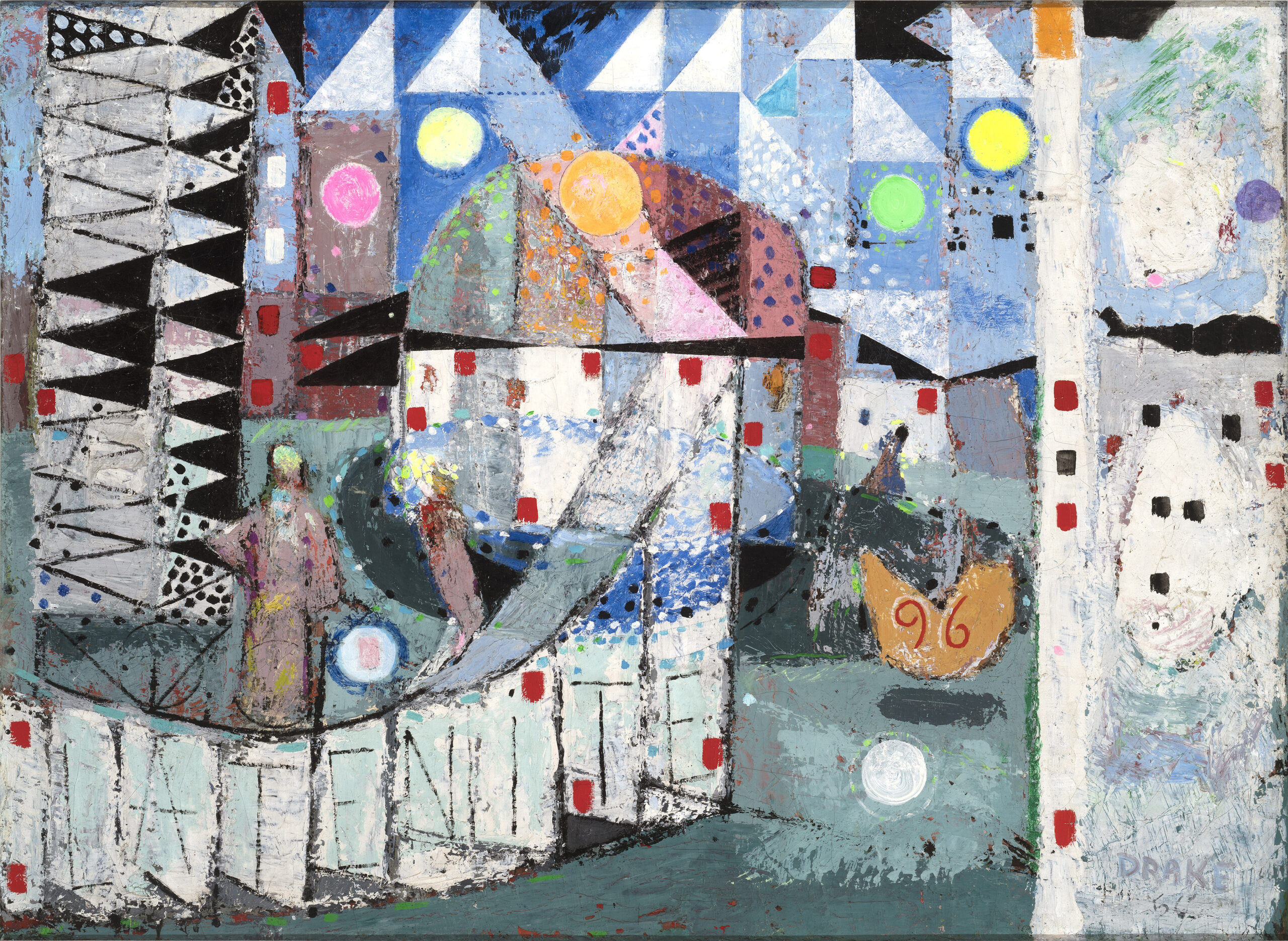FEATURED OBJECT
Franklin Drake (1929-2001)
Delaware, Lenape’s Dream Machine
Franklin “Bud” Drake was born in San Diego, California, and was raised in Sadsburyville, Pennsylvania, and Wilmington, Delaware. After graduating from A.I. duPont High School in Wilmington in 1947, he studied painting with Frank Schoonover for a year before attending the Pennsylvania Academy of the Fine Arts (PAFA) and studying at the nearby Barnes Foundation. In 1959, he and a few friends from PAFA established the Espresso Café in the town center of Woodstock, NY. The Café served as a meeting place for local artists for several years and later hosted Bob Dylan as an upstairs tenant. Drake spent time living in New York City and Philadelphia before returning to Woodstock later in life.
Having grown up in Wilmington, Drake spent many happy hours at Lenape Park, a popular amusement park in the area. Even after enrolling at the PAFA and moving to Philadelphia, he would return to Lenape Park, where he painted this work in 1956. Forty years later, in 1996, he returned to this canvas and added abstract elements, finally completing the composition. The curved form at the lower left resembles a roller coaster and features letters spelling “Late Nite.” Other shapes seem to suggest the carousel, stage, and shimmering lights in the early evening.
1956 and 1996
Oil on canvas
31 ½ x 43 ½ in. (80 x 110.5 cm)
Gift of Ruth Drake, 2023.14

